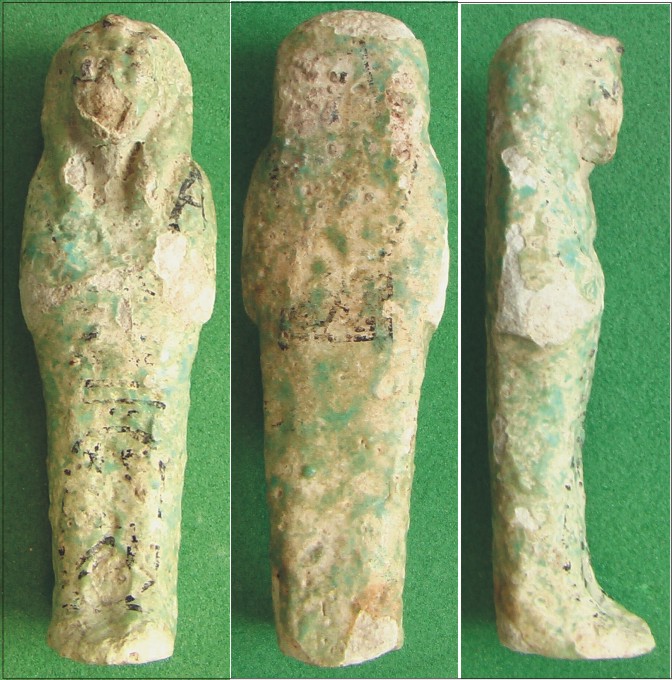W1315
W1315 Shabti of Qedmerut
 This is a shabti, which belonged to The Divine Adoratrice Qedmerut of the late 22nd Dynasty. This shabti came to us via the British Museum in 1980. The inscription reads The Osiris, Lord of the Two lands, the Divine Adoratrice Qedmerut. When Egyptians died they were linked with the male god of the dead, Osiris, hence the title ‘The Osiris’.
This is a shabti, which belonged to The Divine Adoratrice Qedmerut of the late 22nd Dynasty. This shabti came to us via the British Museum in 1980. The inscription reads The Osiris, Lord of the Two lands, the Divine Adoratrice Qedmerut. When Egyptians died they were linked with the male god of the dead, Osiris, hence the title ‘The Osiris’.
One of Qedmerut’s shabtis was discovered at the Ramesseum (Quibell, 1898), so it is possible that this is where she was buried.
As a royal lady, Qedmerut wears the uraeus, the protective rearing serpent, on her forehead. The figure is extremely worn, however, more intact specimens show the name to be written in a cartouche.
The Divine Adoratrice was a prestigious title given to royal women from the New Kingdom onwards. It has been suggested that the holders of this title were for a time almost on a par with the king, though their exact role is uncertain. By the Third Intermediate Period, it was held with the title ‘God’s Wife of Amun’.
During the 22nd and 23rd Dynasties the Libyans had come to power and there were a number of different claimants to the throne of Egypt. Some scholars argue that this was characteristic of Libyan society. Qedmerut’s parentage and placing in the list of Divine Adoratrices are therefore not entirely clear.
Other shabtis in the Egypt Centre
Further Reading
Aubert, J-F., 1974. Statuettes Égyptiennes. Chaoubtis, Ouchebtis.
Quibell, J.E., 1898. The Ramesseum.
Schneider, H.D., 1977. Shabtis. An Introduction To The History Of Ancient Egyptian Funerary Statuettes With A Catalogue Of The Shabtis In The National Museum Of Antiquities at Leiden. Vol II.
Taylor, J.H., 2001. Death and The Afterlife in Ancient Egypt.